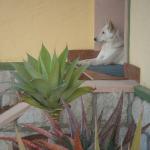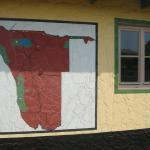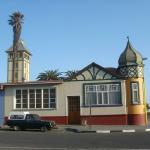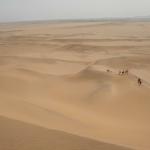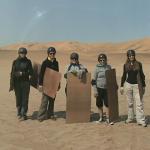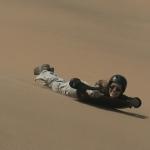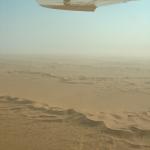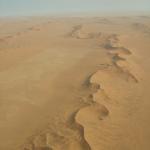© 2011 Sabrina Swenson. All Rights Reserved.
Namibia
November, 2008
Wedged between the Kalahari and the South Atlantic ocean in the Southern part of Africa just North West of South Africa is beautiful Namibia. It's a very arid and sparsely populated country and is home to the Namib desert. Since it was once a German colony (at the end of the 19th century) Namibia is still strangely German in places. The mass amount of trash and complete and utter lack of waste management that is so prevalent in other African countries really doesn't exist in Namibia. It is very German in it's organization, orderliness and cleanliness.
I flew into Windhoek and spent a few days in the capital before taking a service taxi four hours due West to the coastal town of Swakopmund. The German influence can mostly be felt in this small town; from it's half timbered houses to German being spoke everywhere. I went to the Brauhaus and thought I was in Munich. I and the two Dutch people I sat next to were definitely the minority. On my first day there I went sandboarding. You climb to the top of a dune, use a simple piece of ply board, put the smooth side down and away you go! They give you a helmet, gloves and elbow pads. You pull up the front of the board slightly, keep your knees on the board and keep your feet straight out but not touching the ground. We started on the smaller dunes and worked our way up to the biggest. They used a radar gun on the biggest dune and clocked me at 73km/hour (45 miles/hour). They videotaped it and I actually went airborne twice. The second time I must have dropped the front of the board as after getting a mouth full of sand I went flying. Luckily nothing but a sand burn under my chin!
Another day I went up in a small Cessna for a 2 hour flight over the desert. I met 4 Germans that were looking for a person to fill the 5th seat on the plane. I said "here I am!". The dunes are vast and seem to never end. I could actually see the curvature of the earth. I sat in the right seat and at one point the pilot blasted Toto's "Africa" through his headset. It was a cool moment.
Another day I went quad biking in the dunes. There were several of us that signed up that day and we each had our own quad bike. We took off and for hours drove up, down and through the dunes.
I eventually made my way back to Windhoek and got on with a three day tour to the most magnificent part of the desert; Sossusvlei. The dunes are part of the 32,000 sq. km sand sea that covers much of western Namibia The dunes are part of one of the oldest and driest ecosystems on earth. There were 11 of us in the group and it was a nice mix of Irish, English, Japanese, German, Israeli and me, the only American. After stocking up on supplies, we drove about 5 hours. Half way down we stopped to set up for lunch. We just pulled off the road under a big tree and the guides pulled out a big collapsible table from the back of the bus. They then set up for lunch; cooking pot, flame and all. They also had collapsible chairs for everyone. When the meal was ready we would help ourselves and take a seat and chat while we ate. This became our routine for the next three days whenever we were not at our camp. It seemed pretty funny to be pulling a full size table out of the back of the bus but by the last day it was nothing new. We eventually got to our camp. Since there were several of us traveling solo we each got our own tent. They were pretty easy to assemble and once zipped, impenetrable to any bugs, scorpions and other undesirables of the desert. It was not completely roughing it though, as the permanent toilet facilities near the tents were large and rather grand. It was pretty funny how although every bathroom and shower stall was HUGE, there was no roof. We awoke in the early morning to have breakfast by the campfire before setting out. As is usually the case in the desert, regardless of the extreme heat during the day, the evenings were always very cold. We would set off early in the chilly morning and the temperature would quickly shoot up to 38C (100F). We stopped at one of the biggest sand dunes in the world and climbed to the top. I huffed and puffed and finally made it. When walking in sand one step up equals 1/2 step down due to the ever shifting terrain. I got some good pictures from the top but the best part was running down the dune. We then had breakfast (around the big, collapsible table) again and set off to my favorite part of Namibia; the Dead Vlei.
The Dead Vlei is surrounded by some of the highest sand dunes in the world, some reaching up to 300 meters (984 feet). The clay pan was formed after rainfall, when the Tsauchab river flooded, creating temporary shallow pools where the abundance of water allowed camel thorn trees to grow. When the climate changed, drought hit the area, and sand dunes encroached on the pan, which blocked the river from the area. The trees died, as there was no longer enough water to survive. The remaining skeletons of the trees, which are believed to be about 900 years old, are now black because the intense sun has scorched them. The wood does not decompose because it is so dry. As you can see from the pictures, it was like being on another planet... I thought of Mars. The terrain was so unusual I couldn't get enough pictures! The vast desert that covers much of Namibia is truly magnificent!


